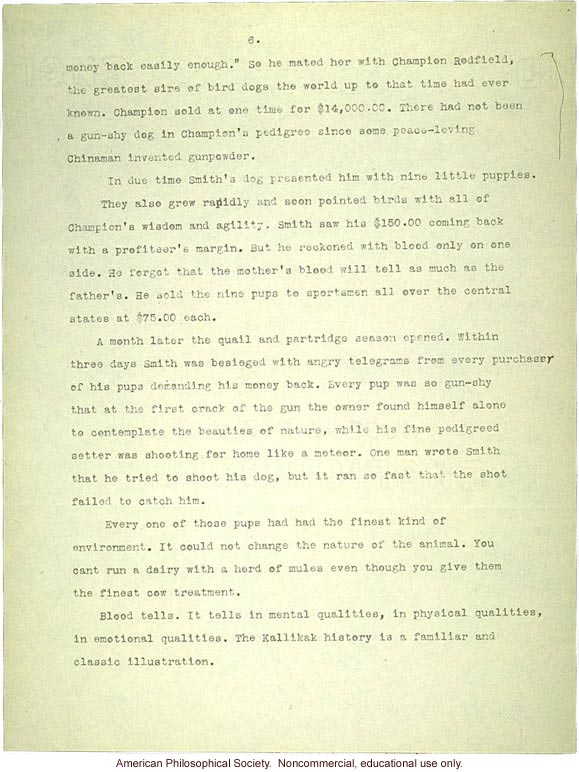[page number] 6. [end page number]
money back easily enough." So he mated her with Champion Redfield, the greatest sire of bird dogs the world up to that time had ever known. Champion sold at one time for $14,000.00. There had not been a gun-shy dog in Champion's pedigree since some peace-loving Chinaman invented gunpowder.
In due time Smith's dog presented him with nine little puppies.
They also grew rapidly and soon pointed birds with all of Champion's wisdom and agility. Smith saw his $150.00 coming back with a profiteer's margin. But he reckoned with blood only on one side. He forgot that the mother's blood will tell as much as the father's. He sold the nine pups to sportsmen all over the central states at $75.00 each.
A month later the quail and partridge season opened. Within three days Smith was besieged with angry telegrams from every purchaser of his pups demanding his money back. Every pup was so gun-shy that at the first crack of the gun the owner found himself alone to contemplate the beauties of nature, while his fine pedigreed setter was shooting for home like a meteor. One man wrote Smith that he tried to shoot his dog, but it ran so fast that the shot failed to catch him.
Every one of those pups had had the finest kind of environment. It could not change the nature of the animal. You cant run a dairy with a herd of mules even though you give them the finest cow treatment.
Blood tells. It tells in mental qualities, in physical qualities, in emotional qualities. The Kallikak history is a familiar and classic illustration.


